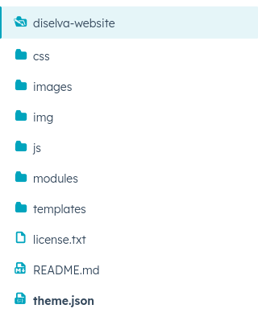Fast time-to-market with Hubspot CMS
from Samuel Schäublin at
Anyone setting up a new company starts from scratch when it comes to a number of issues. Be it the name, the brand, the financing, structural issues and - particularly important in our domain - the tools to be used.
One of the core applications for our business is, of course, CRM. We decided in favour of Hubspot relatively quickly. The Hubspot CRM offers everything we need as a start-up in the service sector to manage our (potential) customers. Hubspot not only offers a comprehensive CRM solution, but also a CMS module including a blog with the free tools. After a short phase of analysing from Cuno, it was clear to us that we would use it to implement our website. In this blog post, I would like to discuss the advantages and disadvantages of the Hubspot CMS and show you how we built our website with it in just a few days.
Technology
The cloud-based Hubspot CMS offers much of what we know from familiar content management systems. As with enterprise solutions such as AEM, Magnolia or Sitecore, content is structured on pages and components. Both can be created in any form as so-called templates (for pages) and modules (for components). The whole thing is encapsulated in a theme. As known from the WordPress world, there are also ready-made themes for Hubspot, which can be used to create a website in just a few clicks. However, you can also develop such themes yourself, which is what we did for our website.
Bulma
The Hubspot CMS is based on a very outdated Bootstrap version. Bootstrap is probably the best known, largest and most powerful CSS framework. Not the right one for our relatively small website. That's why we opted for Bulma. Bulma is lightweight, simple and also already equipped with some basic components that fit perfectly with the ideas of our website. Contrary to Hubspot's idea of developing CSS (and JavaScript) directly in Hubspot, we opted for a variant in which we create the frontend independently of the Hubspot CMS in a frontend prototype and load the resulting artefacts into the CMS using the Hubspot CLI tool.
Hubspot Design Manager
In the Hubspot Design Manager, the entire website can be developed in the browser. The page layouts and components are located in the templates and modules folders.
The proprietary HubL syntax, which takes some time getting used to, is used as the templating language. Components (or modules) can be easily configured in the Design Manager and also imported or exported via the Hubspot CLI.
Hubspot CLI
The Hubspot CLI can be used to synchronise the files of a Hubspot theme with the local file system. To do this, the Hubspot CLI tool must be installed and configured. You can then use the hs fetch command on the command line to export content from Hubspot or use the hs upload command to import files back into Hubspot. We use the Hubspot CLI for versioning in GIT and - as already mentioned above - for uploading the frontend assets, but also to be able to carry out the development status from the DEV to the PROD instance in Hubspot.
Advantages
With the Hubspot CMS, a fully functional website can be created in just a few days. The templates and modules include concepts familiar from the enterprise world, which also work surprisingly well. Multiple page languages can also be easily set up and maintained. Overall, the content editor is impressive anyway. It offers some nice features such as the preview view (with sendable link) for unpublished pages.
The platform is also fast; thanks to caching, not only images (from the simple media library) but also any static content is delivered quickly. A blog module is also included and forms can be integrated into the website with so-called landing pages, which can be used for integration into the CRM (Web to Lead).
Last but not least, it is also possible to create different environments. As mentioned above, we use a DEV and PROD environment, but it would also be possible to create further development instances.
Disadvantages
In the free version of the CMS, the number of pages is limited to 50, which is currently (still) sufficient for us. Unfortunately, there are no page hierarchies in the free version, so our pages are all at the same level hierarchically. However, a custom "breadcrumb component" and manually adding the pages to main navigation points can help here.
Similarly, more complex developments (e.g. translation of labels, reusability of content) are rather time-consuming or only possible with workarounds. The Hubl syntax, which is very cumbersome in some respects, is only of limited help here.
Conclusion
Precisely because of the disadvantages mentioned above, Hubspot does not scale in the free version and - as expected - you will eventually reach its limits or have to update to the somewhat more expensive professional version. It must also always be borne in mind that a SaaS CMS always has certain limitations and these are then difficult to expand/extend.
For these reasons, we recommend choosing Hubspot's CMS in small and easily predictable cases (and only in combination with the Hubspot CRM) (where we are of course also happy to provide support!).
However, if it is known from the outset that the CMS will grow in terms of functionality, will not be the only channel for digital content or should integrate well with or into other systems, we recommend placing the CMS in a composable architecture accordingly and choosing a product designed for this purpose.
